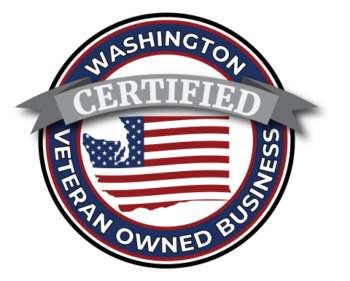With nearly half of all current data workloads already hosted in the cloud, cloud adoption and migration are taking over business IT infrastructures — and this number is only increasing.
According to a recent market research study, cloud adoption and migration are expected to increase by 65% in the next three years.
If you run a business, then it’s likely you have also considered cloud migration as a part of your digital transformation because of the many benefits it has to offer. Implementing the right cloud migration strategy can reduce your total cost of ownership and also give your business more opportunities to grow through modern innovation.
Cloud migration is a complicated process and business owners who are expanding their digital horizons through this avenue should make sure to connect with a professional IT MSP to take care of the technicalities for them. To ensure a seamless cloud migration process, there are certain best practices that must be followed.
Let’s take a look at the best cloud migration strategies that business owners can apply to get the most out of hosting their data in the cloud.
What Is the Cloud Migration Process?
Cloud migration is a digital information transferring process in which a company moves its databases, IT applications, and digital assets into the cloud. Cloud migration may also occur when a business decides to transfer their data from one cloud to the other.
There are three main types of cloud-based migration:
Re-platform
In the re-platform cloud migration strategy, a system is modified to work optimally in the cloud without completely altering the core architecture. This strategy is also called Lift and Reshape as well as Move and Improve.
Re-Host
The re-host cloud migration process — also called lift and shift—is when a business shifts data from an on-site host to the cloud. The re-hosting process generally starts with migrating the simplest items and moves on to more complex items along the way. The cloud migration tools used will vary based on the cloud migration models, whether it is laaS, PaaS, or a SaaS platform.
Re-Factor
During the re-factor cloud migration process, a business updates its existing application so that it meets regulatory standards and expectations.
Whichever of the three types you choose, cloud platform migration offers many benefits, including:
- Improved efficiency
- Time-saving due to increased agility and easy consumption
- Workload optimization
- Enhanced security and compliance for sensitive data
Migrating to the cloud can significantly improve your business performance and security, however, the necessary steps need to be followed to benefit optimally from switching to a cloud environment.
| Check out these blogs on migrating to the cloud: |
Cloud Migration Steps and Best Practices
To ensure cloud computing best practices are being followed, businesses must ensure they follow the right steps for cloud migration.
- Plan the Migration and Define a Strategy
Statistics show that creating a detailed business plan enhances business growth by 30%. This same practice can be applied to cloud migration.
Organizations need to ensure they define a clear strategy that outlines their goals for cloud adoption. When specific objectives and business outcomes are decided beforehand, it becomes a lot easier to ensure the migration is going smoothly.
- Define KPIs
To make sure your goals are met, you will need to establish key performance indicators (KPIs) and track them as the cloud migration journey progresses. By defining specific metrics that must be fulfilled, you can better understand if the selected migration tools are living up to their full potential.
- Undertake Discovery and Assessment
Once the strategy is decided, business owners can move on to the discovery and assessment phase. During this phase, the best form of cloud migration is decided through a detailed assessment of the organization’s current IT infrastructure.
- Make Cloud Security a Priority
Security is one of the top concerns during cloud migration. To ensure no data is compromised and security costs are minimized, prepare a security checklist before you migrate. This can include assessing things such as data exposure, compliance requirements, whether data centers are onshore or offshore, and more.
- Assure Compliance
Based on your industry, there may be several digital information regulatory standards you must comply with, such as HIPAA, PCI-DSS, and GDPR. When your data is moved to the cloud, you need to ensure you are following the existing rules, so you do not run into any legal complications due to non-compliance.
- Secure Professional Help
To minimize the risk of things going wrong and to ensure the best possible outcome, organizations need to make sure they only become cloud-native with the help of an IT professional or MSP who is experienced in cloud adoption and migration protocols.
Since these steps in cloud migration require a significant amount of planning and understanding of highly technical IT elements, it is always best to ensure skilled professionals are moderating and carrying out the entire process from start to finish.
When done right, cloud migration will give your company the innovative edge it needs to thrive in the current dynamic digital era.
What Are Some Cloud Migration Challenges?
Due to the technical nature of cloud migration, there are several challenges that you need to keep your eyes out for.
These challenges include:
- Difficulty in moving and screening legacy applications
- Concerns about rebuilding applications optimally
- Deciding the best methods and individuals to carry out cloud management
- Factoring in the effort required to ensure a smooth cloud migration process
- Resolving cloud infrastructure and application dependencies
The best way to mitigate these challenges is to make sure a professional is handling the process and following cloud migration best practices.
What’s the Easiest Way to Mitigate Cloud Migration Challenges
Working with an IT partner that’s helped businesses like yours migrate to the cloud successfully
Benefit From the Best Cloud Migration Strategies with Attentus Tech Today
Cloud migration is a complex and sensitive procedure and is best left to the professionals. We offer fully customizable support packages and provide IT services that will help you make the most of your cloud environment on an ongoing basis.
Reach out to us today to get help with your cloud migration process so you can secure your data and enhance your business process at an affordable rate.

